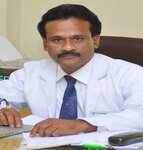Forensic odontology: The prosthetic ID
DOI:
https://doi.org/10.4103/jfo.jfds_91_19Keywords:
Forensic Odontology, Identification Tools, Victim IdentificationAbstract
The term “forensic science” involves forensic (or forensis, in Latin), which means a public discussion or debate. In a more modern context, however, forensic applies to courts or the judicial system. Combine that with science, and forensic science means applying scientific methods and processes to solving crimes. People can be identified by their fingerprints, foot creases, and from traces of their DNA from blood, skin, hair, saliva, and semen by DNA analysis. However, in situations where these records are unavailable or unusable due to the nature of the disaster, the dental records and aids prove to be useful for victim identification. This article aims at highlighting the importance of the dental records and the forensic odontology in the accurate and efficient identification of the conflict victims or deceased to serve as an important adjunct to the forensic medicine in a simplified manner.Downloads
Metrics
References
Goldman AD. The scope of forensic dentistry. In: Cottone JA,
Standish SM, editors. Outline of Forensic Dentistry. Chicago:
Yearbook Medical Publishers; 1982. p. 15‑9.
Krogman WM, Iscan MY. The Human Skeleton in Forensic
Medicine. 2nd ed. Springfield Illinois: Charles Thomas Publisher;
p. 189‑243.
Rao CV. Role of forensic odontologist in medicolegal investigation.
J Indian Dent Assoc 1979;51:81‑4.
Sweet D. Why a dentist for identification. Dent Clin North Am
;45:237‑49.
Hinchliffe J. Forensic odontology, Part 1. Dental identification. Br
Dent J 2011;210:219‑24.
Sweet D, DiZinno JA. Personal identification through dental evidence
tooth fragments to DNA. J Calif Dent Assoc 1996;24:35‑42.
Ambarkova V, Gali I, Vodanovi M, Bioina‑Lukenda D, Brki H.
Dental age estimation using Demirjian and Willems methods: Cross
sectional study on children from the Former Yugoslav Republic of
Macedonia. Forensic Sci Int 2014;234:187.e1‑7.
Willems G. A review of the most commonly used dental age
estimation techniques. J Forensic Odontostomatol 2001;19:9‑17.
Frush JP, Fisher RD. How dentogenic restorations interpret the sex
factor. J Prosthet Dent 1956;6:160‑72.
Khamis MF, Taylor JA, Malik SN, Townsend GC. Odontometric
sex variation in Malaysians with application to sex prediction.
Forensic Sci Int 2014;234:183.e1‑7.
Barr ML, Bertram LF, Lindsay HA. The morphology of the nerve
cell nucleus, according to sex. Anat Rec 1950;107:283‑97.
Nakahori Y, Takenaka O, Nakagome Y. A human X‑Y homologous
region encodes amelogenin. Genomics 1991;9:264‑9.
Edgar HJ. Estimation of ancestry using dental morphological
characteristics. J Forensic Sci 2013;58 Suppl 1:S3‑8.
Barsley R, Freeman A, Metcalf R, Senn D, Wright F. Bitemark
analysis. J Am Dent Assoc 2012;143:444.
Rothwell BR. Bite marks in forensic dentistry: A review of legal,
scientific issues. J Am Dent Assoc 1995;126:223‑32.
Nagalaxmi V, Ugrappa S, Naga JM, Lalitha C, Maloth KN,
Kodangal S. Cheiloscopy, palatoscopy and odontometrics in sex
prediction and dis‑crimination: A comparative study. Open Dent
J 2015;8:269‑9.
Rath R, Reginald BA. Palatal rugae: An effective marker in
population differentiation. J Forensic Dent Sci 2014;6:46‑50.
Ohira H, Yamamuro Y, Kitagawa Y, Nakagawa K, Yamamoto I,
Yamada Y. Effective appropriate use of dental remains and
forensic DNA testing for personal identity confirmation. Leg
Med (Tokyo) 2009;11:S560‑2.
Aguloglu S, Zortuk M, Beydemir K. Denture bar‑coding: A new
horizon. Br Dent J 2009;206:589‑90.
Colvenkar SS, Gopal S. Microsecure digital card: A novel method
for denture identification. J Forensic Dent Sci 2014;6:183.
Colvenkar SS. Lenticular card: A new method for denture
identification. Indian J Dent Res 2010;21:112.
Mahoorkar S, Jain A. Denture identification using unique
identification authority of India barcode. J Forensic Dent Sci
;5:60.
Dimashkieh MR, Al‑Shammery AR. Engraved fixed restorations
to facilitate identification in forensic dentistry. J Prosthet Dent
;69:533‑5.
Downloads
Published
How to Cite
Issue
Section
License
Copyright (c) 2019 Journal of Forensic Dental Sciences

This work is licensed under a Creative Commons Attribution 4.0 International License.
CC-BY allows for unrestricted reuse of content, subject only to the requirement that the source work is appropriately attributed.













